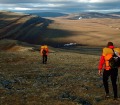Barefoot shoes are not only a great choice for everyday life but also for athletic activities like running, hiking, and fitness. They promote the natural movement of the foot, which can lead to improved performance and a reduced risk of injury, especially for athletes. In this article, you’ll learn why barefoot shoes are so beneficial for athletes and which models are particularly suitable for various sports activities.
Why are barefoot shoes useful for athletes?
Barefoot shoes mimic natural barefoot walking, which brings numerous benefits. Unlike conventional sports shoes, they offer only minimal cushioning and support. This may seem unusual at first glance, but it leads to a stronger activation of the foot muscles and improves natural running technique. Direct ground contact allows athletes to better control their movements and develop a better feel for the terrain.
Advantages of barefoot shoes for athletes
- Strengthening of foot muscles: Since barefoot shoes don’t provide support, the muscles are more engaged, making them stronger over time.
- Improved balance and stability: Direct ground contact enhances balance as the body is forced to adjust better to the surface.
- Fewer injuries: Many runners report fewer knee and back problems as barefoot shoes promote a more natural running motion and reduce pressure on the joints.
- Increased flexibility: The shoes are extremely flexible, allowing the foot to move freely. This encourages a natural walking and running style.
Barefoot shoes for running
Why run barefoot?
Running in barefoot shoes is an experience that many runners find liberating. Without the thick cushioning of conventional running shoes, you run with a more natural foot movement, emphasizing the forefoot or midfoot instead of landing on the heel. This can lead to a smoother running style and reduce impact on the knees and hips.
Recommended barefoot running shoes
- Vivobarefoot Primus Lite: These shoes are lightweight, extremely flexible, and breathable. They are ideal for daily running training and provide a natural running style that enhances the feeling of barefoot running.
- Merrell Vapor Glove: The Vapor Glove is a popular barefoot running shoe with its ultra-thin sole and minimal construction. It’s perfect for runners who want to experience the barefoot feeling as intensely as possible.
- Xero Shoes HFS: This running shoe offers a mix of barefoot sensation and a bit of comfort for longer distances. It is particularly durable and still provides the feeling of barefoot running.
Barefoot shoes for hikers
Hiking with barefoot shoes: What are the advantages?
For hikers, barefoot shoes offer some special benefits. The thin sole allows you to feel the ground better, leading to improved footing. This can be especially helpful in rugged terrain, on rocks, or during steep ascents to maintain balance and avoid falls.
Key features of barefoot hiking shoes
- Grip and traction: Although the sole is thin, many barefoot hiking shoes offer good traction to stay safe on different terrains.
- Flexibility: The shoe should be flexible enough to adapt to the terrain while still protecting the foot optimally.
- Breathability and water resistance: Especially when hiking, breathable materials and some water resistance are important to keep the foot dry and cool.
Recommended barefoot hiking shoes
- Vivobarefoot Tracker FG: The Tracker FG is a robust barefoot hiking shoe with a special outsole that provides good grip on rocky and muddy terrain. It’s also waterproof and breathable.
- Xero Shoes Xcursion Fusion: This shoe is lightweight and waterproof, making it perfect for demanding hikes. The flexible sole ensures you can move safely even on uneven terrain.
- Wildling Nebula: Wildling shoes are known for their flexibility and lightness. The Nebula is a great shoe for long hikes and offers a soft, flexible sole that protects the foot well while maintaining the barefoot feeling.
Barefoot shoes for the gym and other sports
In addition to running and hiking, barefoot shoes are also ideal for other sports activities, especially for training in the gym or activities like yoga and CrossFit. Since the shoes provide maximum freedom of movement, the foot can perform the full range of motion, which is crucial for exercises like squats or lunges.
Recommended barefoot shoes for the gym
- Leguano Aktiv: These shoes offer a non-slip sole that provides stability during gym workouts. They are extremely lightweight and flexible, making them suitable for any type of workout.
- Vibram FiveFingers V-Train: Vibram FiveFingers is one of the most well-known brands in the barefoot segment. The V-Train offers individual toe compartments, allowing maximum freedom of movement while providing stability.
- Xero Shoes Prio: The Prio is a versatile shoe suitable for both the gym and outdoor activities. Its flexible sole and lightweight design make it perfect for functional fitness exercises.
What to consider when buying barefoot shoes for sports?
Fit and comfort
The right fit is crucial. Barefoot shoes should not be too tight, as the foot needs enough room to spread out. At the same time, they shouldn’t be too loose to ensure good stability.
Sole and cushioning
For sports activities, a flexible but grippy sole is important. Depending on the area of use, a slightly thicker sole may be useful, especially for hiking on hard terrain, to protect the foot from sharp stones.
Breathability and protection
Sporting activities often lead to sweating, so it’s important that the shoes are breathable. Some barefoot shoes also offer additional protection against water, which is especially beneficial for outdoor activities.
Conclusion: Barefoot shoes as the perfect companion for athletes
Whether running, hiking, or training in the gym – barefoot shoes offer athletes a unique combination of freedom of movement, stability, and comfort. They promote natural foot movement, which not only improves performance but also enhances the long-term health of the musculoskeletal system. With the wide range of models and brands, there’s a suitable barefoot shoe for every athlete.












